Quito and around
OK so I’m being fairly liberal in my definition of around as it encompasses Baños and Riobamba both of which are about 4 hours drive from Quito…but tough!
After our snowy attempt of Cotopaxi we decided to head to Baños gringo-ville. Unfortunately luck was still not on our side, either weather-wise or health-wise. Arrive to pouring rain and Nick had devloped a nasty cold overnight.
The weather doesn’t improve for the two days that we are in Baños (neither does Nick’s health), which are famous for their hot pools, which, due to both factors, we don’t visit! Highly lazy, but that is way it has to be sometimes.
From Baños we headed to Riobamba, a gringo destination, but not as obviously so as Baños. The main reason for heading to Riobamba, apart from climbing volcanoes, which we weren’t going to attempt again in a hurry, is the Devil’s Nose Train (El Nariz del Diabalo). It is said that the train journey, which in it’s day used to run from Quito to Guagquil, is “the most difficult train [journey?] in the world” due to the steepness of the Nariz del Diabalo cliff. To overcome this the engineers built zigzags into the cliff with which the train can advance and back-up to reach the bottom of the valley.
On arrival at the train station ot buy tickets it turned out the train wasn’t running, not a rare occurance, but a man had organised a bus which would take us to Alausi were we could get a ticket on a sort of replacement bus/train type arrangement. We decided to go for this option – better than no train journey at all.
With tickets finally purchased for the odd contraption we had a couple of hours to kill in Alausi before our alloted time – for some reason it has a giant statue of San Pedro on a hill overlooking the town so we spent time watching a couple of train-type arrangements wind their way down and back up El Nariz.
Unfortunately, when our time came, I didn’t get a window seat, or a next door neighbour willing to swap seats (most others were nice, I resist to comment about my views of some American tourists here…), but luckily the train stopped three times on the way down for us to get off and admire the views. Not getting a chance to at least look out of the window for a short time has clouded my view of the journey somewhat, but I did have a “is that it?” moment when we pulled back into Alausi.
From Riobamba we headed to Quito and then Otavalo, famous for its Saturday market. We spent the Friday night in Otavalo so we were there early enough to catch the large animal market on the Saturday morning. It reminded us very much of Saquisli, although not as many sheep or llamas at this market, mainly pigs and cows.
It is a pleasant town on a Friday, but on Saturday it felt like the atmosphere had changed slightly and it didn’t feel as laid back as it did the day before. The rest of the town, on a Saturday, is given up to small animals, food, general wares and the usual tourist artesanias (i.e. things you never knew you needed…like a set of panpipes…at least we can now play our own version of El Condor Pasa – made famous by Simon & Garfunkel but is actually a Peruvian tune – our opinion of the local muscians always playing changed when we found that out, but we still don’t forgive the Beatles on panpipes!)
Two days in Quito saw us visit a couple of churches (the Basilica and La Compañia) and generally wander round the Old Town and a day trip to El Mitad del Mundo. We enjoyed both churches for very different reasons. The Basilica because you could basically clamber around the towers getting different views of Quito and La Compañia for the amount of gold leaf it contained. I have never been in such an ornate church.
El Mitad del Mundo – a bizzare fake colonial town with a monument showing the Equator line in it. This line was measured in 1736-1744 by some French men and is in fact 150m out, according to GPS measurements, not bad considering the technology available then. Although we prefered the Quitsalo, deditcated to researching how the indigenous knew about the equator line, and Intinan musuems – a combination of local history (when else do you get to wear the magic hat and try shotting a cactus with a blow pipe?) interspersed with experiments to show how the world is different in the Northern and Southern hemispheres. It is able to do this by claiming to have the true (GPS) equator running through it.
Tags: Baños, Ecuador, Otavalo, Quito, Riobamba, Travel


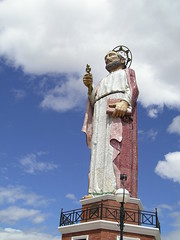
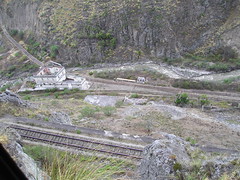



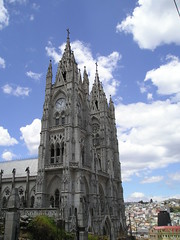
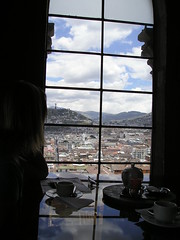
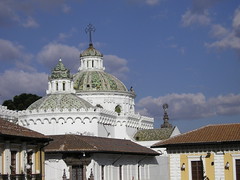
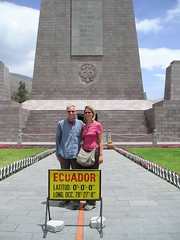
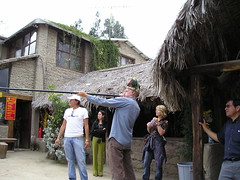
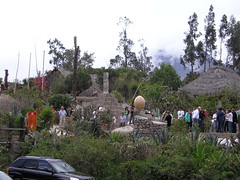
Leave a Reply